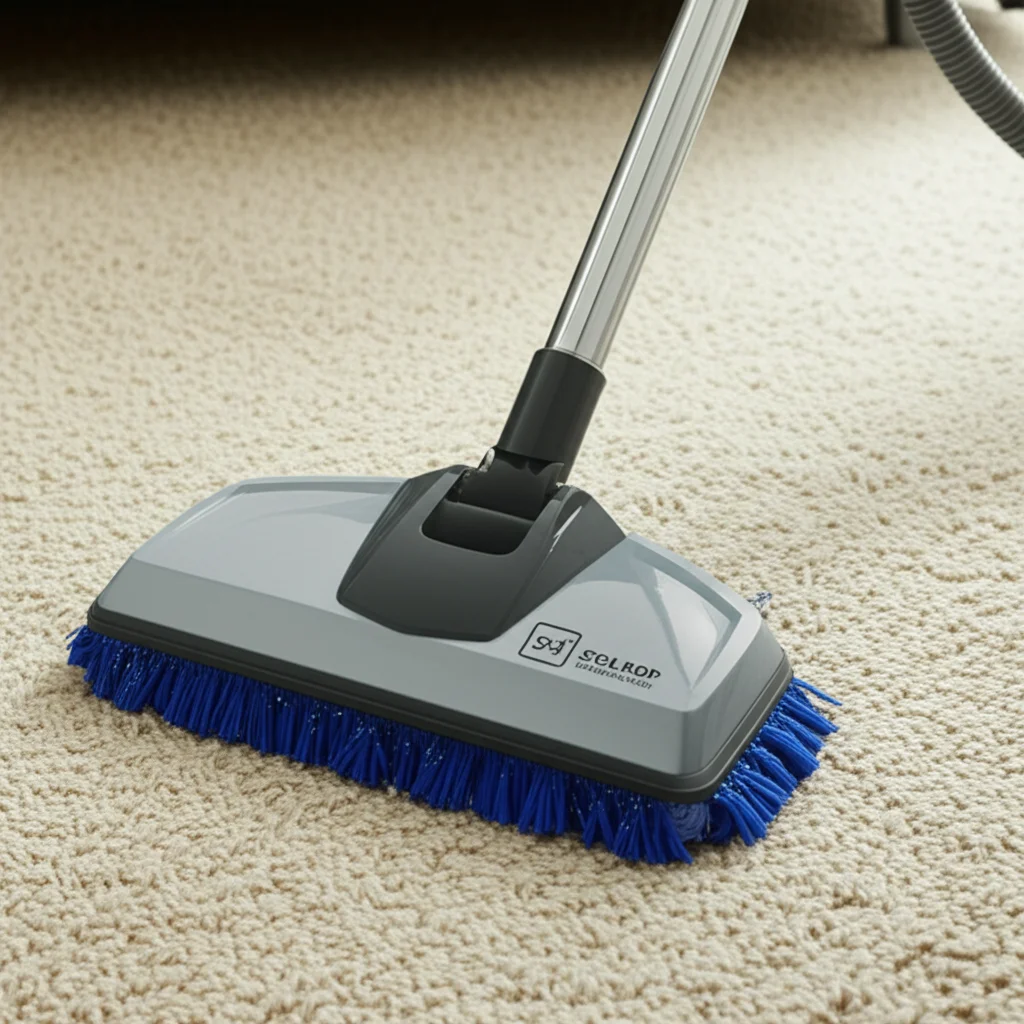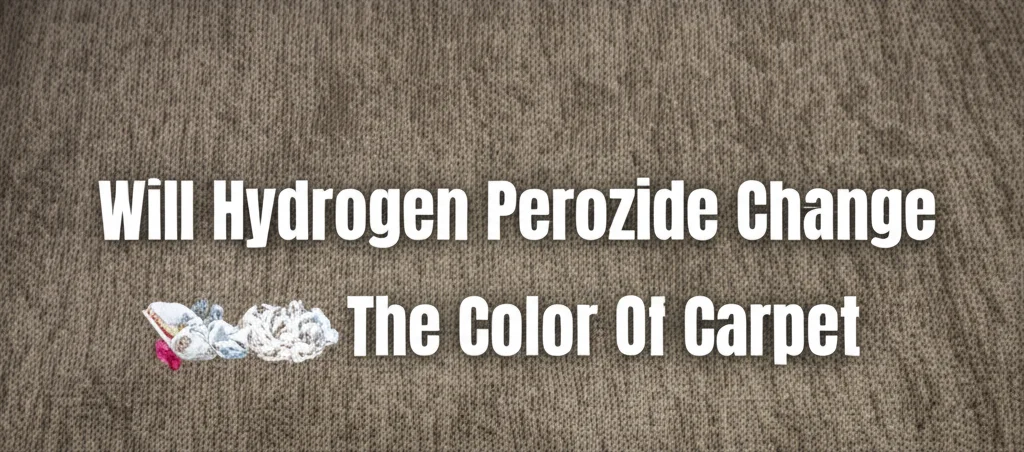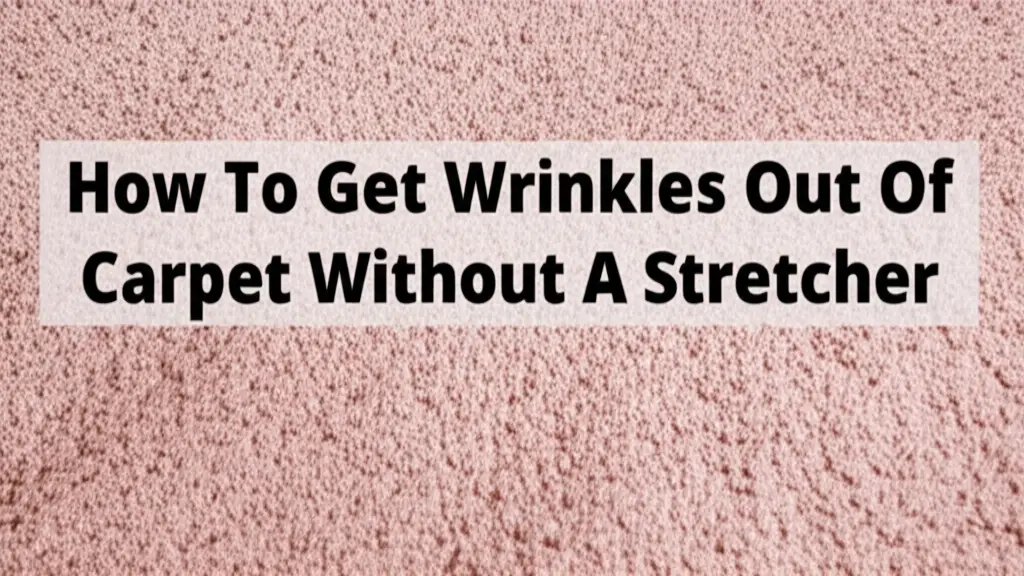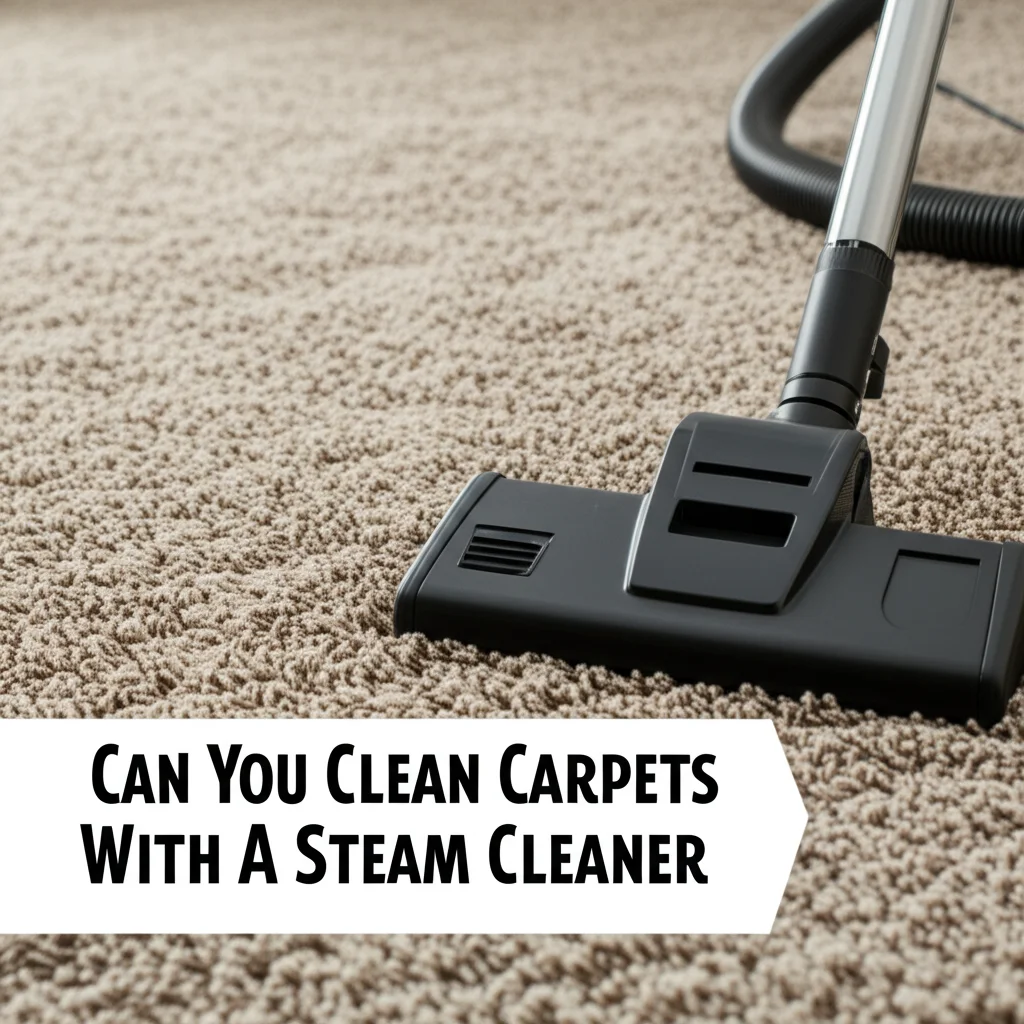· Todd Martin · Carpet Care · 14 min read
Does Steam Mop Work On Carpet

Can You Steam Mop Your Carpet? The Truth About Steam Mops and Carpets
You might be looking for a quick and easy way to refresh your home. Many people wonder, “Does steam mop work on carpet?” It is a common question, especially for those seeking an all-in-one cleaning solution. Steam mops are fantastic tools for hard floors. They use hot steam to sanitize and clean surfaces. However, carpets are different from hard surfaces. Their unique fibers require a specific cleaning approach. This article will explore whether a steam mop works on carpet. We will also look at the potential risks and effective alternatives for keeping your carpets clean and fresh.
Takeaway
- Steam mops are generally not recommended for widespread carpet cleaning.
- Excessive moisture from steam mops can damage carpet fibers and backing.
- Using a steam mop on carpet can lead to mold growth and mildew.
- Some steam mop models include a carpet glider for quick refreshing, but this is not for deep cleaning.
- Carpet extractors or professional services offer superior and safer deep cleaning for carpets.
Does Steam Mop Work On Carpet?
Generally, a standard steam mop does not work effectively on carpet for deep cleaning. While some steam mop models come with a carpet glider attachment, this is typically for surface refreshing or deodorizing, not for removing deep-seated dirt or stains. The steam can push dirt deeper into fibers and over-wet the carpet, leading to potential damage or mold issues.
Understanding How Steam Mops Operate
Steam mops are simple appliances. They heat water to a high temperature, creating steam. This steam then cleans and sanitizes hard surfaces like tile or sealed hardwood. The hot vapor effectively loosens dirt and kills bacteria. People use them to clean kitchens, bathrooms, and other areas with hard floors.
The Mechanism of Steam Cleaning
A reservoir in the mop holds water. This water heats up quickly. A pump pushes the steam out through a cleaning pad. The pad is often made of microfiber. It traps dirt as the steam lifts it. This process works well on non-porous surfaces.
Designed for Hard Surfaces
Steam mops are specifically designed for hard, non-absorbent surfaces. These surfaces can withstand high heat and moisture. They also dry quickly after cleaning. This design prevents water from sitting on the surface for long. This helps avoid damage or mold.
The Risks of Using Steam Mops on Carpet
Using a steam mop on carpet comes with several risks. Carpets are made of fibers that absorb moisture. This makes them different from hard floors. Applying too much heat and water can cause serious problems. It is important to know these risks before attempting to clean your carpet with a steam mop.
Over-Wetting and Drying Time
A major risk is over-wetting the carpet. Steam mops release a lot of moisture. Carpet fibers soak up this moisture readily. If the carpet gets too wet, it takes a very long time to dry. This creates an ideal environment for mold and mildew. Mold can grow quickly in damp conditions.
Damage to Carpet Fibers and Backing
The intense heat from a steam mop can also damage carpet fibers. Synthetic fibers might melt or get discolored. Natural fibers, like wool, can shrink or become matted. The backing of the carpet, which is often made of latex, can also be weakened. This can cause the carpet to delaminate or buckle. This type of damage is often irreversible.
Mold, Mildew, and Odors
Excessive moisture trapped in the carpet leads to mold and mildew growth. You might not see it at first, but it can grow deep within the carpet padding. Mold produces musty odors. It can also cause health problems, especially for people with allergies or respiratory issues. Proper drying is crucial to prevent this. Using a steam mop often does not allow for proper extraction of moisture, unlike a carpet cleaner. You can learn more about general how to keep carpet clean to prevent these issues.
Pushing Dirt Deeper
Instead of lifting dirt, a steam mop can push it deeper into the carpet pile. The steam might loosen surface dirt. However, without strong suction, that dirt gets pushed down. This makes your carpet look cleaner initially but can leave a residue. Over time, this makes the carpet appear dirtier faster. This is different from how a carpet cleaner extracts dirt.
When a Steam Mop Might Be Considered (With Caution)
While full steam mopping is not recommended for carpets, there are limited scenarios where a steam mop, especially one with a carpet glider, might be used. These uses are generally for light surface refreshing, not deep cleaning. Even in these cases, extreme caution is necessary. It is crucial to understand the limitations and potential downsides.
Light Surface Refreshing or Deodorizing
Some steam mops come with a “carpet glider” attachment. This attachment lifts the mop head slightly above the carpet. It allows steam to penetrate the very top layer of fibers. This can help to refresh the carpet’s appearance or remove light odors. This process does not involve deep cleaning. It primarily targets surface-level dust and slight pet odors. Consider this a temporary fix.
Spot Cleaning with Specific Attachments
For small, isolated spots, some steam mop models offer specialized nozzle attachments. These can deliver a concentrated burst of steam to a specific area. This might help loosen certain stains. However, you must immediately blot the area with a clean, dry cloth. This prevents the moisture from soaking in too deeply. Always test a hidden area first. For difficult stains, you might need specific solutions. Knowing how to clean spots on carpet with other methods can be more effective.
Testing a Hidden Area
Before using any steam on your carpet, always test a small, inconspicuous area. Pick a spot in a closet or under a piece of furniture. Apply steam briefly. Check for color changes, fiber damage, or excessive moisture. Wait for it to dry completely. This test helps prevent damage to visible areas. If it causes issues, do not use it on the main carpet.
Essential Preparations Before Any Carpet Cleaning Attempt
Proper preparation is vital before attempting any cleaning method on your carpet. This step ensures safety and maximizes cleaning effectiveness. Ignoring these steps can lead to further damage or poor results. Every cleaning task begins with a clean slate.
Thorough Vacuuming
Always start by vacuuming your entire carpet very thoroughly. This removes loose dirt, dust, and debris from the surface. A powerful vacuum cleaner can lift embedded particles. If you skip this step, the cleaning process might push this loose dirt deeper into the carpet. This makes your carpet appear dirtier after cleaning. Regularly vacuuming is key to how to keep carpet clean generally.
Pre-Treatment for Stains
For specific stains, pre-treat them before general cleaning. Use a suitable carpet stain remover. Apply it according to the product instructions. Let it sit for the recommended time. This helps break down the stain. Different stains require different treatments. For instance, how to clean urine out of carpet or how to clean coffee spill out of carpet requires specific approaches. Pre-treatment makes the main cleaning process more effective.
Understanding Carpet Type and Material
Identify your carpet’s material. Different fibers react differently to heat and moisture. Synthetic carpets (nylon, polyester) are more resilient. Natural fibers (wool, silk) are very sensitive. Heat can damage wool, causing shrinkage or matting. Always check your carpet’s care label if possible. Knowing the material helps you choose the safest cleaning method. This prevents irreversible damage.
Recommended Alternatives for Effective Carpet Cleaning
Since steam mops are not ideal for general carpet cleaning, you need other options. Many effective methods exist for keeping your carpets clean and fresh. These alternatives are specifically designed for carpet fibers. They ensure a deeper clean without the risks associated with excessive moisture.
Using a Dedicated Carpet Cleaner (Extractor)
A carpet cleaner, also known as a carpet extractor, is the best tool for deep cleaning. These machines spray a cleaning solution into the carpet. They then powerfully suck up the dirty water. This process removes dirt, allergens, and stains from deep within the fibers. You can rent these machines or buy one. Brands like Bissell and Hoover offer great options. This method is much safer and more effective than a steam mop. It ensures proper drying as well. If you have one, you might also want to know how to clean carpet shampooer for its maintenance.
Professional Carpet Cleaning Services
For the deepest clean and peace of mind, hire professionals. Professional carpet cleaners use high-powered equipment. They have specialized knowledge and cleaning solutions. They can tackle tough stains and refresh your entire home. Professionals ensure proper drying. This prevents mold and extends your carpet’s life. This is a great option for annual deep cleans or severe spills. They can effectively clean a whole room of carpet.
Dry Carpet Cleaning Methods
Some carpets benefit from dry cleaning methods. These methods use special powders or foams. You apply the product to the carpet. It absorbs dirt and grime. After a set time, you vacuum up the powder. This method uses minimal water. It is excellent for water-sensitive carpets or quick refreshes. It leaves no moisture behind. This completely eliminates the risk of mold or mildew.
Spot Cleaning Kits and Solutions
For isolated spills or small stains, a dedicated spot cleaning kit is invaluable. These kits contain specialized solutions and tools. They are designed to lift stains without damaging fibers. Always blot, do not rub, a stain. Work from the outside of the stain inwards. Having a good kit on hand helps you act fast. This prevents stains from setting. You can get tips on how to spot clean carpet effectively. For some stains, like pet accidents, specific enzymatic cleaners are needed. For example, knowing how to clean dog urine from carpet involves different steps.
Post-Cleaning Carpet Care and Maintenance
After cleaning your carpet, proper post-care is crucial. This step ensures your carpet dries correctly and stays clean longer. Neglecting post-cleaning steps can lead to re-soiling or lingering moisture issues. Good maintenance extends the life and appearance of your carpet.
Ensuring Proper Drying
Drying is the most critical step after any wet carpet cleaning. Air circulation is key. Open windows and doors if weather permits. Use fans or a dehumidifier to speed up the drying process. Do not walk on the carpet until it is completely dry. This can take several hours, or even a full day. Walking on a damp carpet can cause re-soiling.
Regular Vacuuming Habits
Maintain a regular vacuuming schedule. This prevents dirt and dust from building up. Vacuum high-traffic areas several times a week. Less-used areas can be vacuumed weekly. Regular vacuuming is simple but highly effective. It removes loose debris before it gets embedded. This prevents the need for frequent deep cleans.
Addressing Residual Odors
Sometimes, cleaning can leave behind a scent, especially after dealing with old stains or pet accidents. Baking soda is a simple solution. Sprinkle it generously over the carpet. Let it sit for several hours, or even overnight. Then vacuum it up thoroughly. Baking soda absorbs odors. For stronger odors, professional deodorizers might be needed. If you used vinegar for cleaning, you might also want to know how to get vinegar smell out of carpet. This also works if you want to simply freshen up your carpet.
Protecting Against Future Stains
Consider applying a carpet protector. Many brands offer spray-on solutions that repel spills. This creates a barrier on the carpet fibers. Spills bead up on the surface, giving you time to blot them. This makes future cleanups easier. Always test the protector in an inconspicuous area first. Also, placing mats at entryways helps trap dirt before it reaches your carpet.
Specific Scenarios and Considerations for Carpet Care
Carpets come in many forms, and some scenarios require specific attention. It’s not just about cleaning; it’s about understanding the unique needs of different carpeted areas and situations. Thinking about these details helps you make better choices for your home’s flooring.
Cleaning Area Rugs vs. Wall-to-Wall Carpets
Area rugs offer more flexibility than wall-to-wall carpets. Many smaller area rugs can be taken outside for beating or even machine-washed. Always check the rug’s care label first. Larger rugs might still need professional cleaning. Wall-to-wall carpets are fixed. This limits your cleaning options. They require in-situ cleaning methods. The risks of over-wetting are higher for wall-to-wall installations.
Dealing with Pet Stains and Odors
Pets can be messy. Pet stains, especially urine, need immediate and specific attention. Urine can soak into the padding and cause persistent odors. Use enzymatic cleaners specifically designed for pet accidents. These cleaners break down the urine at a molecular level. Blot the area thoroughly after applying the cleaner. Avoid using heat, as it can set the stain and odor. Learning how to clean pee out of carpet quickly is essential.
Refreshing Old or Heavily Used Carpets
Older carpets or those in high-traffic areas might look dull. A steam mop with a carpet glider might offer a very superficial refresh. However, a dedicated carpet extractor provides a deeper clean for these carpets. It can remove years of embedded dirt. Professional cleaning is often the best option for restoring heavily used carpets. It can breathe new life into them. This helps avoid the need to replace them too soon.
Considerations for Synthetic vs. Natural Fibers
Carpet materials vary widely. Synthetic fibers like nylon and polyester are generally more durable. They resist stains better and handle moisture relatively well. Natural fibers like wool, silk, or jute are more delicate. They are prone to shrinkage, discoloration, and damage from excessive heat or moisture. Always use low-moisture methods for natural fiber carpets. Check manufacturer guidelines. This is crucial for their longevity.
FAQs About Steam Mops and Carpets
Can a steam mop damage my carpet?
Yes, a steam mop can damage your carpet. Excessive moisture from the steam can saturate the carpet fibers and backing. This leads to issues like mold growth, mildew, and permanent discoloration. High heat can also melt synthetic fibers or shrink natural ones like wool. It is best to use a dedicated carpet cleaner instead.
What is a carpet glider for a steam mop?
A carpet glider is an attachment for some steam mops. It is a frame that fits over the mop head. The glider allows the steam mop to slide over carpet surfaces. It lifts the hot mop pad slightly, preventing direct contact. This attachment is for light surface refreshing or deodorizing, not for deep cleaning.
Can steam mops remove old stains from carpet?
Steam mops are generally not effective at removing old stains from carpet. The steam can sometimes loosen surface dirt, but it often pushes the stain deeper into the fibers. For old stains, a dedicated carpet stain remover or a professional carpet cleaning machine (extractor) is usually required.
What is the best way to deep clean carpet?
The best way to deep clean carpet is by using a dedicated carpet cleaner (extractor) or hiring professional carpet cleaning services. These methods use specialized cleaning solutions and powerful suction to effectively remove embedded dirt, allergens, and stains from deep within the carpet fibers. They also ensure proper moisture extraction.
How long does carpet take to dry after steam cleaning?
After steam cleaning (if you’ve used a carpet cleaner, not a steam mop), carpet can take anywhere from 6 to 24 hours to fully dry. This depends on factors like humidity, air circulation, and how much moisture was used. Fans, open windows, and dehumidifiers can significantly speed up the drying process.
Is it safe to use a steam mop on wool carpet?
No, it is generally not safe to use a steam mop on wool carpet. Wool is a natural fiber that is highly susceptible to heat and moisture. Steam can cause wool to shrink, mat, or discolor permanently. For wool carpets, it’s best to use professional cleaning services or dry carpet cleaning methods that use minimal water.
Conclusion
The question, “Does steam mop work on carpet?” often arises from a desire for efficient home cleaning. While steam mops are excellent for hard surfaces, they are generally not suitable for deep cleaning carpets. The risks of over-wetting, fiber damage, mold growth, and pushing dirt deeper into the carpet outweigh any perceived benefits for widespread use. Your carpet needs a proper approach.
For true carpet cleanliness, dedicated carpet cleaners (extractors) or professional carpet cleaning services are the superior choice. These methods effectively remove dirt, sanitize, and ensure proper drying, protecting your investment. If you are looking to refresh or spot-clean lightly, and your steam mop has a carpet glider, proceed with extreme caution and always test a hidden area first. Remember, prioritizing proper care will help your carpet look its best and last longer. Always choose the right tool for the job.





